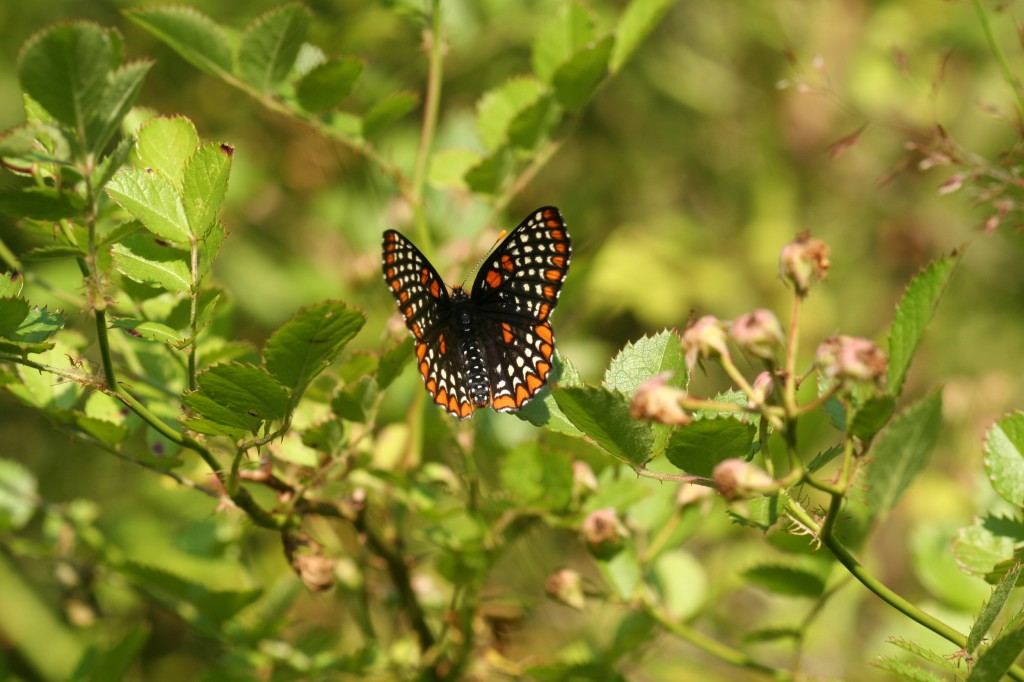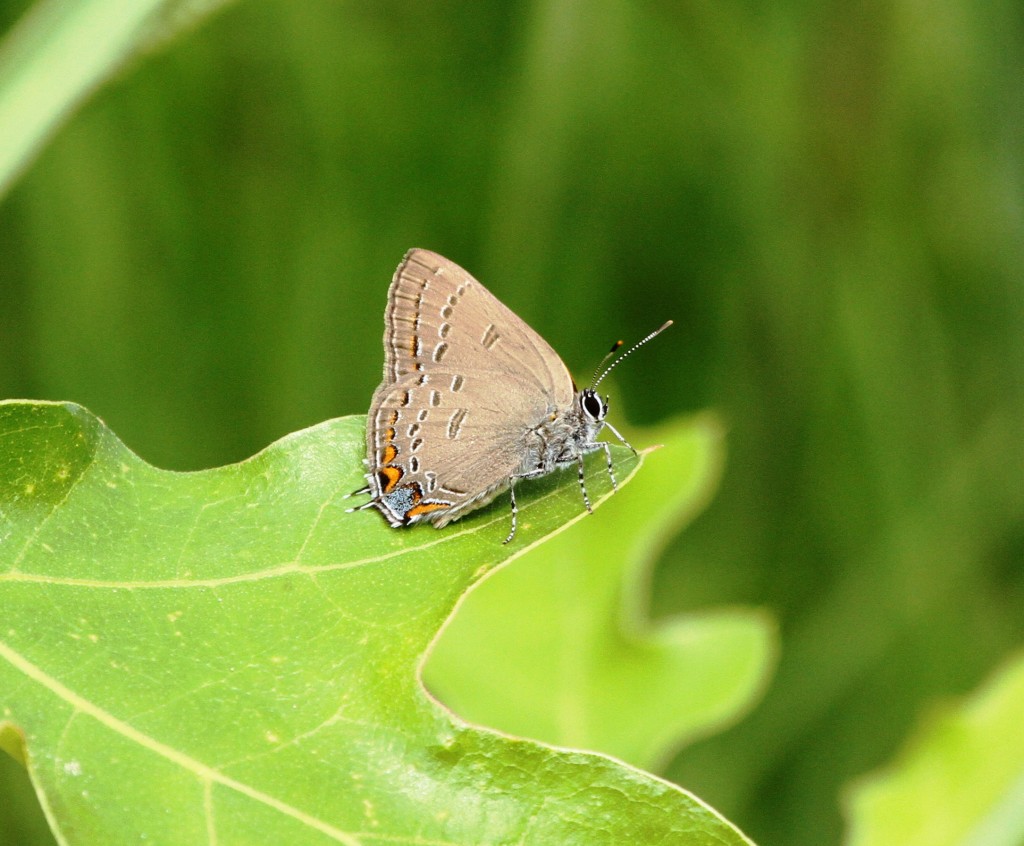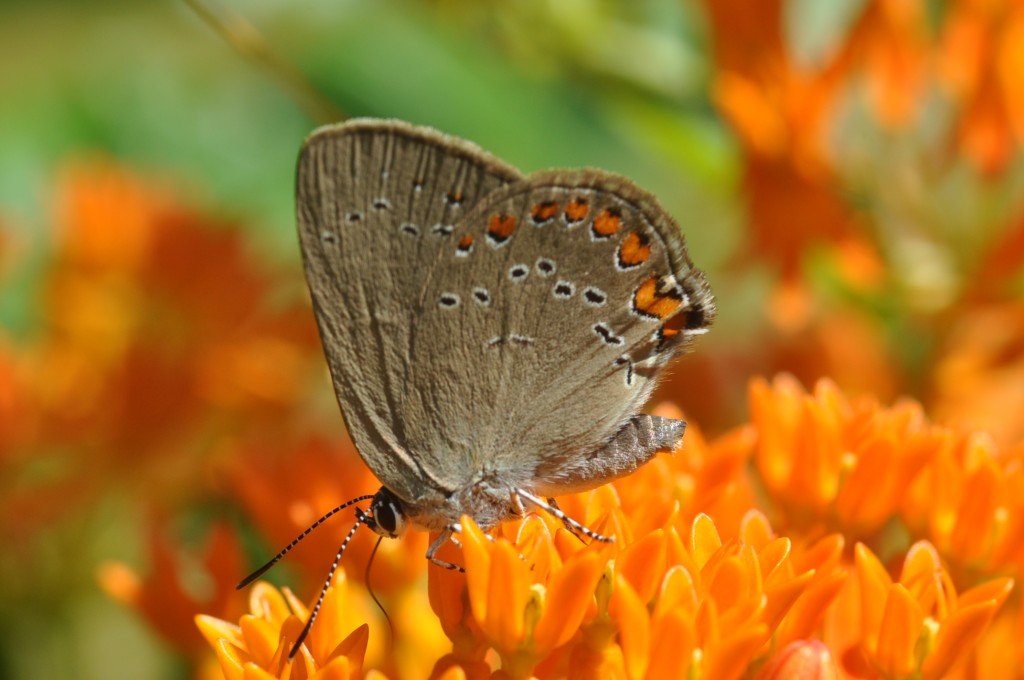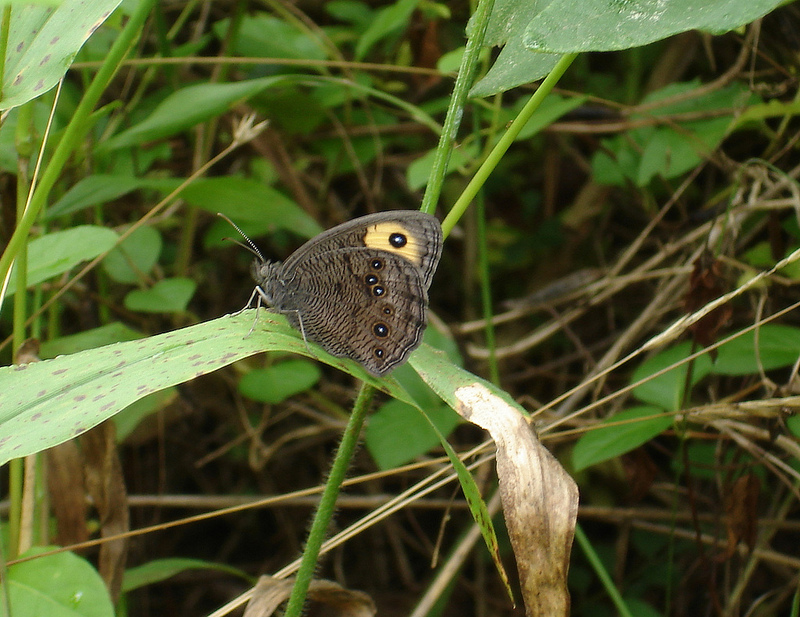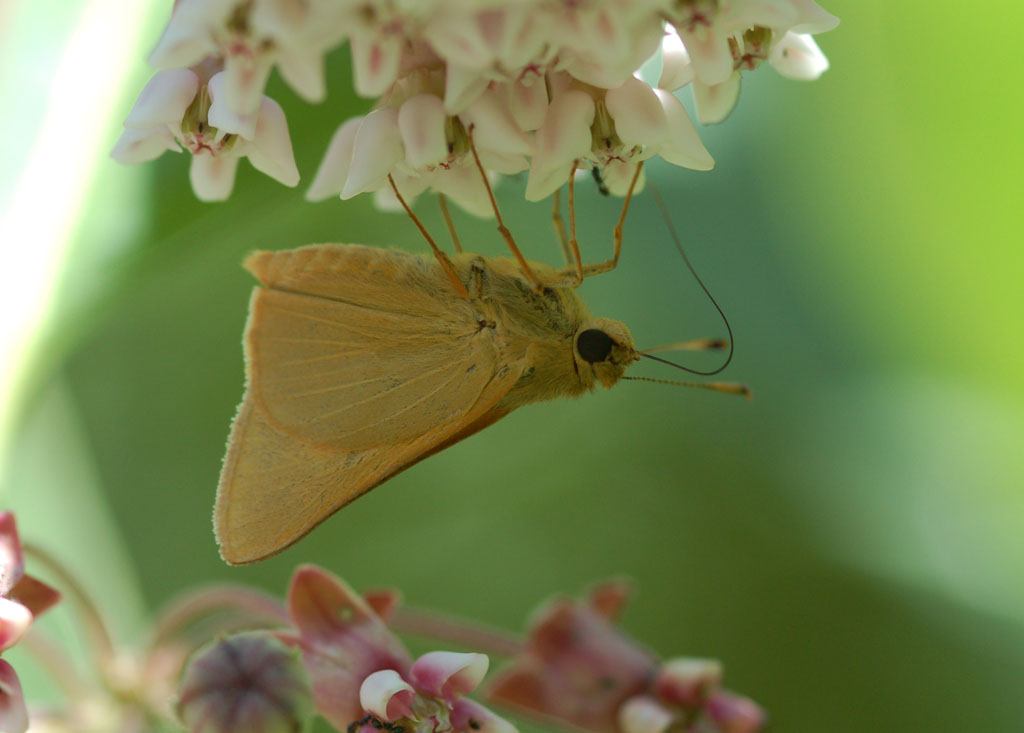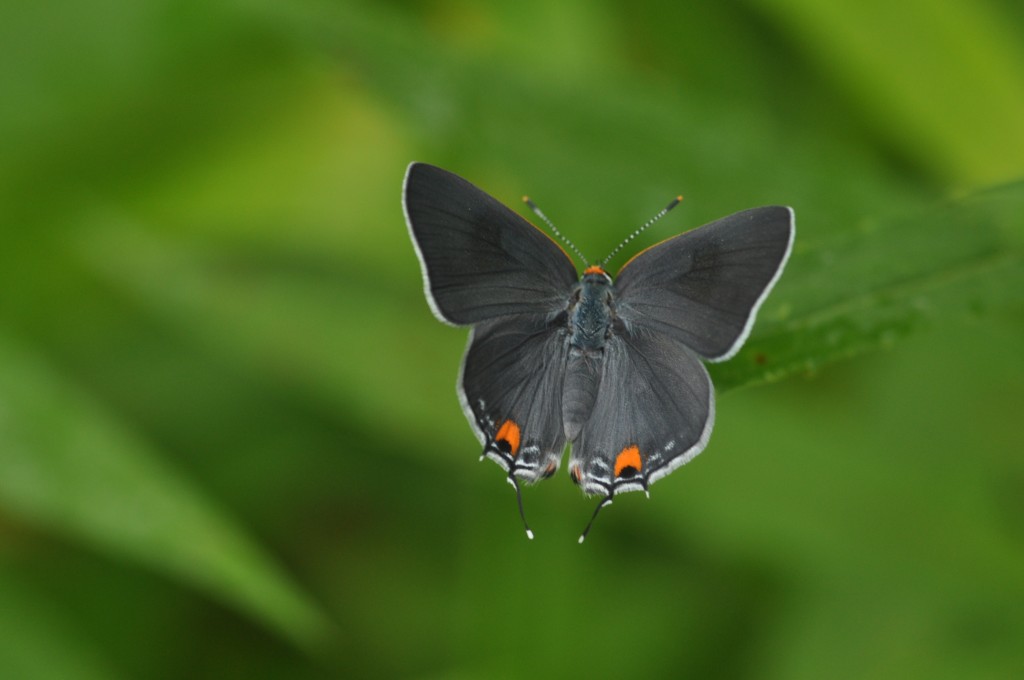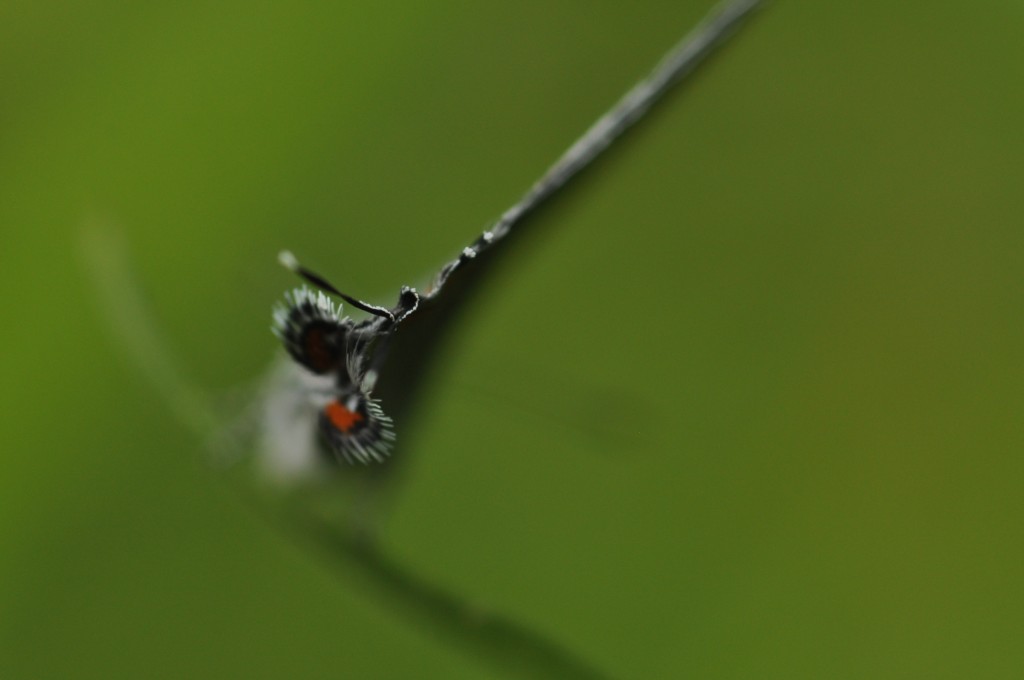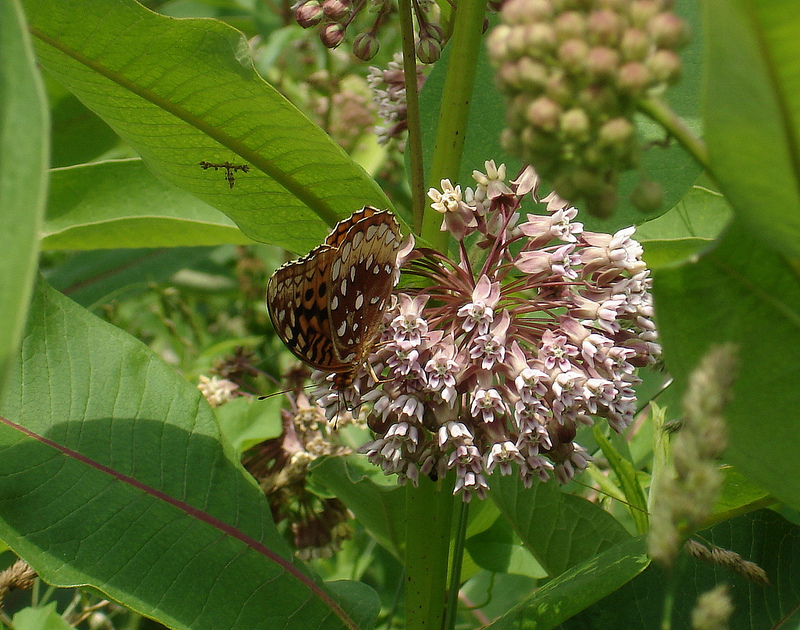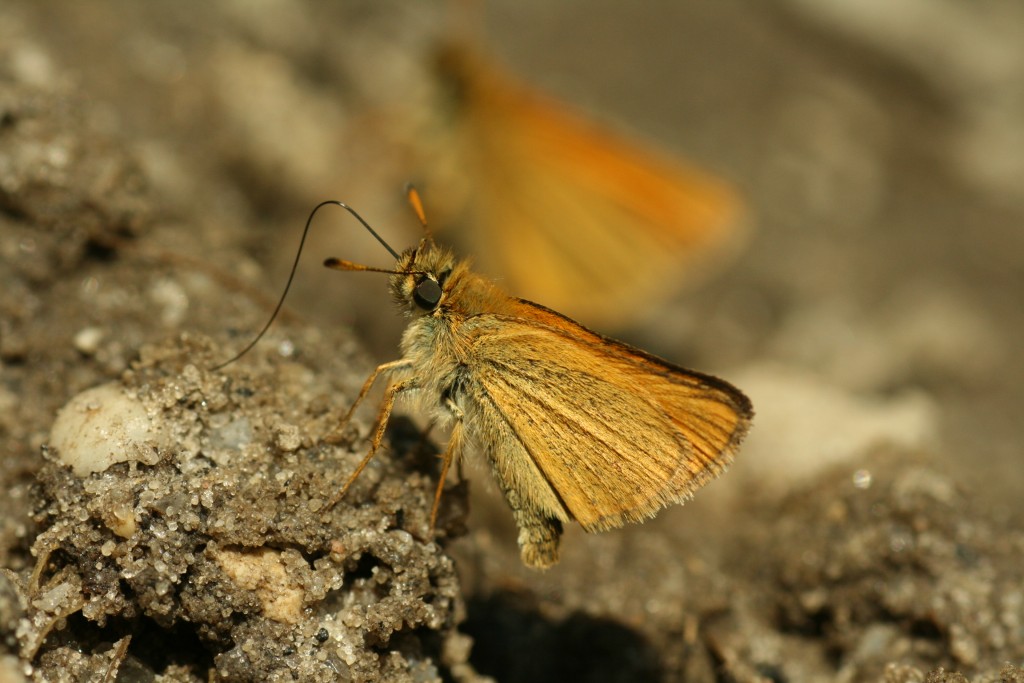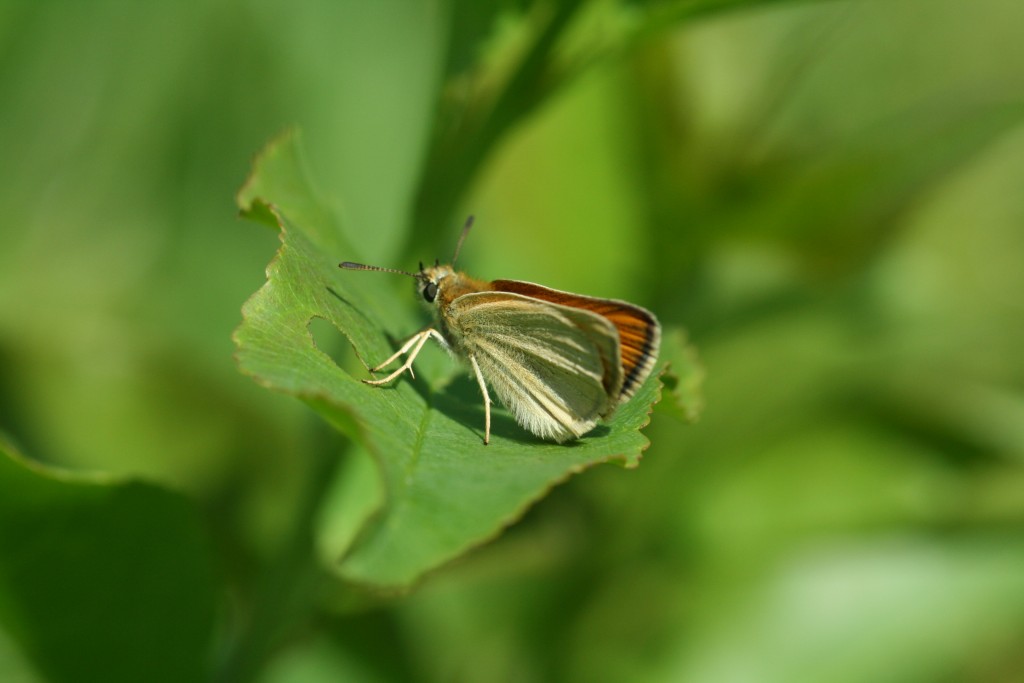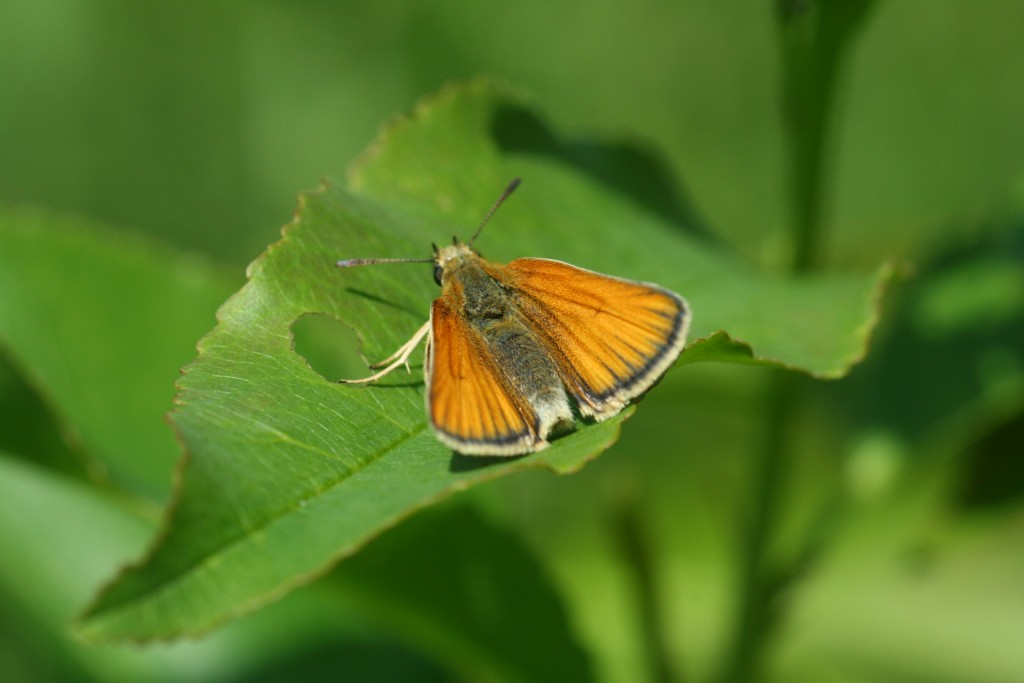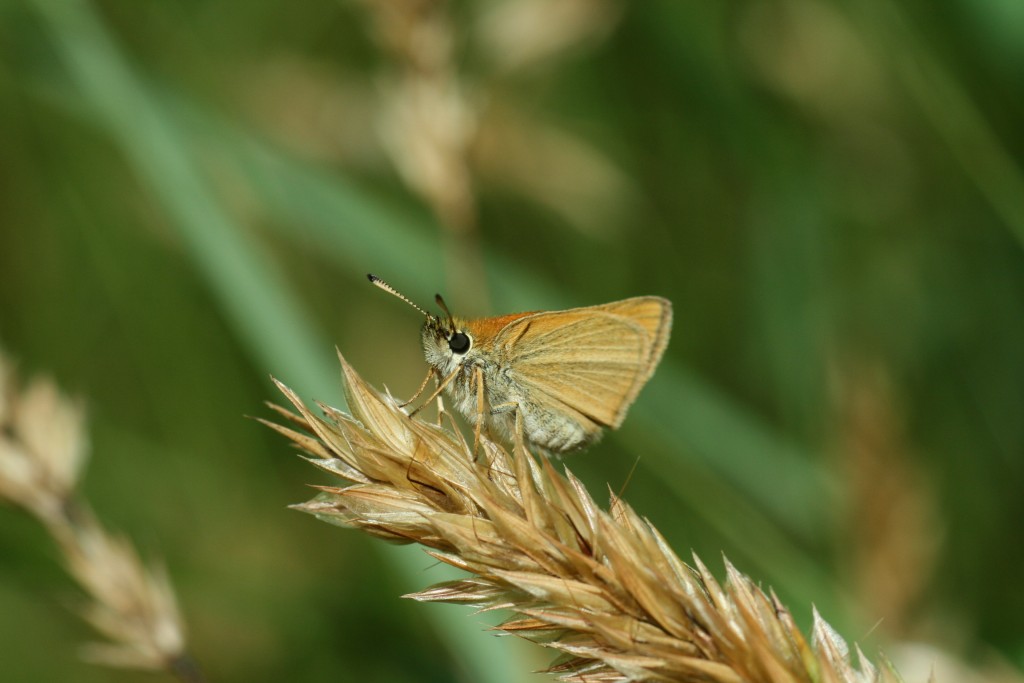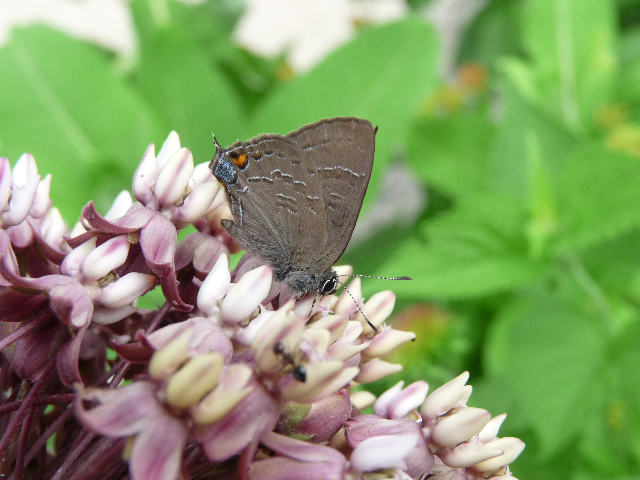
Banded hairstreak at Audubon (Camden County), photo’d by Chrus Herz, 6-12-13.
Twenty-eight observers contributed to a total of 2041 reports last month, our highest total of June records in our six years of logging, breaking our record June total of 1844 observations compiled last year.
From our last lingering pine elfin and sleepy duskywing on June 1 to our most-recently-emerging species, mulberry wing on June 25 and hoary-edge skipper on June 28, we found 66* species during the month. That’s our second highest total for species diversity in June, topped only by last year’s 69 species. (All earlier counts for the month were in the 50s.)
Contributing Observers in June 2013:
Amy Gaberlien
Barb Wiley
Brian Johnson
Bridget O’Connor
Chip Krilowicz
Chris Herz
Chris Tonkinson
Clay Sutton
Chris Williams
Cynthia Allen
Dave Amadio
Gibson Reynolds
Glen Davis
Jesse Connor
Jack Connor
Jean Gutsmuth
Jim Dowdell
Jim Springer
Mike Bisignano
Mike Crewe
Pat Amadio
Pat Sutton
Paula Williams
Sam Galick
Sandra Keller
Steven Glynn
Sylvia Armstrong
Will Kerling
June FOYs:
Twenty-two species were new for the year in June. In order of emergence, they were:
Aaron’s skipper 6/1/2013
hackberry emperor 6/2/2013
Hayhurst’s scallopwing 6/2/2013
swarthy skipper 6/2/2013
banded hairstreak 6/3/2013
European skipper 6/5/2013
Appalachian brown 6/6/2013
Delaware skipper 6/6/2013
northern broken-dash 6/8/2013
salt marsh skipper 6/12/2013
coral hairstreak 6/14/2013
striped hairstreak 6/16/2013
great spangled fritillary 6/16/2013
oak hairstreak 6/17/2013
bog copper 6/18/2013
meadow fritillary 6/18/2013
broad-winged skipper 6/18/2013
tawny emperor 6/21/2013
dotted skipper 6/21/2013
common wood-nymph 6/22/2013
mulberry wing 6/25/2013
hoary edge 6/28/2013
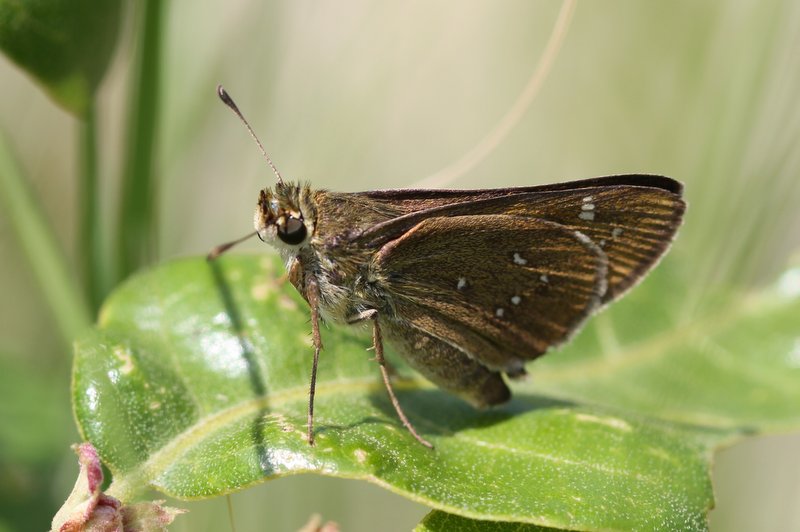
Dotted skipper at Collier’s Mills on 6-21-13, photo’d by Dave Amadio.
New County Records:
We had at least two new county records for our log:
Harvester for Burlington County on June 16. We have now recorded that species in three counties: Gloucester (2012 and 2013), Camden (2012) and Burlington (2013).
Banded hairstreak for Salem County on June 22, our first Satyrium of any species for Salem.
More sorting may find other new county records. Let me know if you are aware of any others.

Harvester in Medford Leas, Burlington County, 6-16-13, photo’d by Jack Connor.
Notable Low Counts:
Species uncharacteristically hard to find this month included:
Monarch. We didn’t record our first monarch until May 30th and we compiled only seven reports and a total of eight adults in the month. In June 2012, by contrast, we had 36 reports for the month and totaled 87 individuals; in June 2011 we had 40 reports and 206 individuals.
Horace’s duskywing. We had only single record and a single individual — on June 2. This is a species usually common in June in southern NJ. In June 2012 we had 34 records and a total of 119 individuals; in June 2011 we had 35 records and a total of 184 individuals.
A few other “common” species have been scarce compared to last year, but these have been scarce in some other past years at this time of the season. We found only a single painted lady, for example, contrasting with the last June’s 28 reports, totaling 46 individuals. But painted lady, as everyone knows, is a cyclical (“feast or famine”) species and we also had only one report of one individual Vanessa cardui the June before last, in 2011. Similarly, this June’s low counts for juniper hairstreak (4 reports; 4 individuals) and mourning cloak (4 and 4) also seem in keeping with their scarcity in some other past years in June.
Overdue For 2013:
Three mid-summer, single-brooded species that we have usually seen by the end of June have yet to be recorded:
Edward’s hairstreak, two-spotted skipper, and rare skipper.
Rare skipper is generally the last of these three to fly and so is the least-overdue at the moment. The other two should be on everyone’s “go-get-’em” list!
Missing But Not Yet Overdue:
We are also apparently missing cloudless sulphur at the moment, but that species hasn’t shown up until at least July in three of our previous five years — and as I am typing this up Will Kerling has left a message about a possible report from a North Jersey butterflyer. Details to follow.*
Fiery skipper, another expected summer species, is also still absent, but this too is a butterfly that we have not seen before July in three of our previous five years. In 2009 we didn’t record our first fiery until August 23.
Full Report:
For all reports go here. Click the + sign for easier viewing. Yellow = first sighting of the month. Green = first sighting for the year.
Spreadsheet for June 2013
To Compare To Last June:
Last June’s compilation report is available here:
June 2012 Report
Keep chasing and reporting, everyone!
jc
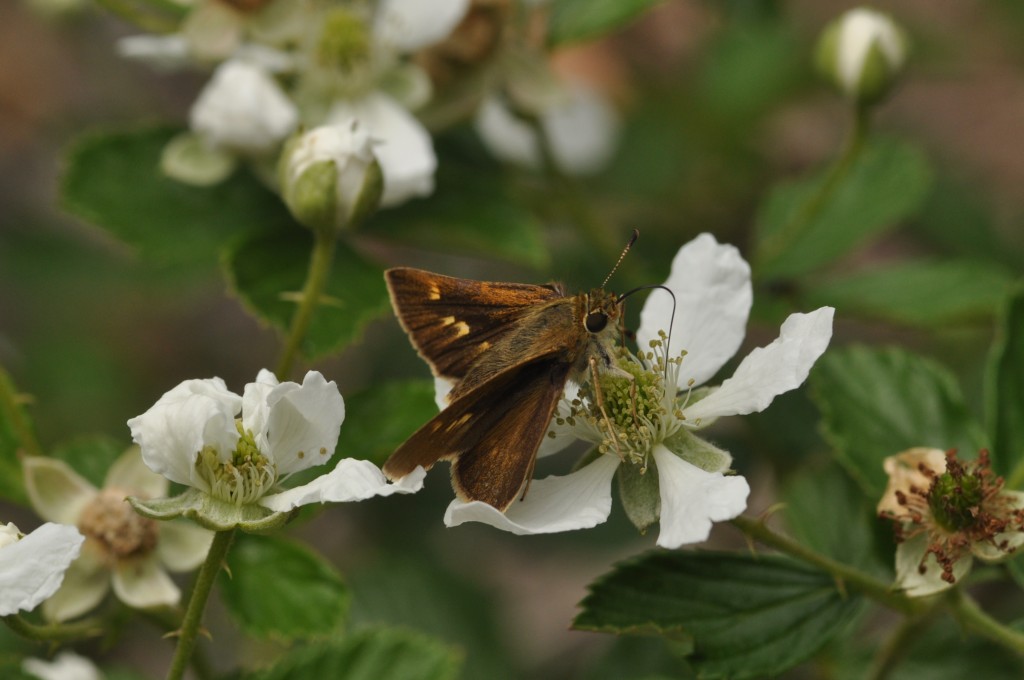
Crossline skipper in Cape May County, photo’d by Will Kerling on 6-6-13.
*July 3 Update: Will Kerling has confirmed that NABA President Jeffrey Glassberg saw cloudless sulphur (two individuals) on Hickman Avenue in Cumberland County on June 30. That gives us 67 species for June and 80 species in South Jersey in 2013.

